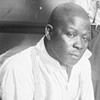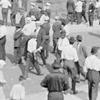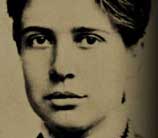

The vast majority of murders in this data set occur between persons of the same race and ethnicity, with the exception of extraordinary eruptions of violence such as the Chicago Race Riots in 1919.
For this data set of more than 11,000 cases the breakdown of homicides by race is as follows: JCLC p.520-521. The coding protocols for race of victim and defendant are described at: JCLC p.543-546 . Data on race of victim and defendant are also presented as Figures (JCLC p.530) and Tables (JCLC p.551 and JCLC p.552). Demographics by race, percent Foreign Born, and the figures for unemployment, 1870-1930 are reported in: JCLC p.553-554.
Additional information on race and gender can be found in the United States Census reports, published every ten years, and in other specialized reports.
The fact that most killings in this data set were not interracial does not imply that racial conflict was not present and persistent, or that race relations were not problematic. The history and sociology of the black migration to Chicago over this long period, and the sociological and historical study of the black communities in Chicago is the subject of many government reports, scholarly studies, and commentary. For further reading on the subject of blacks in Chicago and race relations in Chicago, click here.
